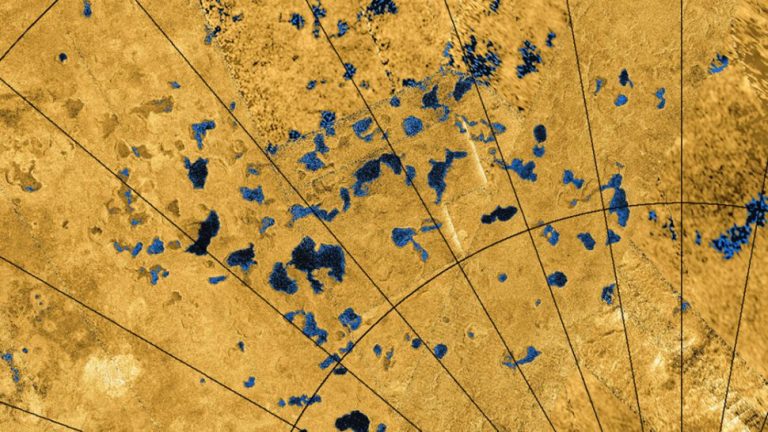Picture a world where rain falls, gathers in lakes and ponds, seeps into the surrounding rock, and evaporates away, only to fall again. There’s just one catch: The world is Saturn’s moon, Titan, where the rain isn’t water; it’s liquid methane.
Two new papers explore how this eerily familiar, waterless “water cycle” manifests on Titan’s surface. To do so, two separate research teams turned to data from the Cassini mission, which ended its stay at the Saturn system in September 2017. The spacecraft flew past the massive moon more than 100 times, gathering crucial observations of this strange world as it did so.
Some of those observations showed scientists something truly extraordinary: their first glimpse of liquid currently on the landscape, rather than mere ghosts of such liquid features. “Titan is the only world outside the Earth where we see bodies of liquid on the surface”, Rosaly Lopes, a planetary scientist at NASA’s Jet Propulsion Laboratory who worked on the Cassini mission but wasn’t involved in either of the new papers. “Some of us like to call Titan the Earth of the outer solar system.”
Read more HERE
Ask me anything
Explore related questions





